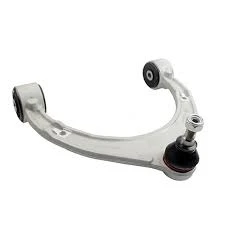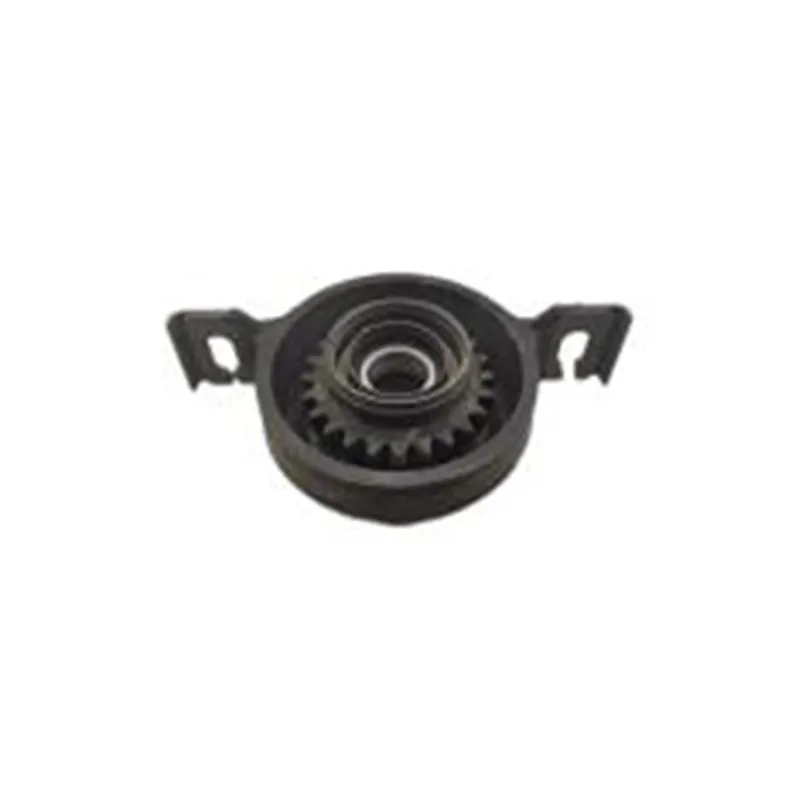
-
 Afrikaans
Afrikaans -
 Albanian
Albanian -
 Amharic
Amharic -
 Arabic
Arabic -
 Armenian
Armenian -
 Azerbaijani
Azerbaijani -
 Basque
Basque -
 Belarusian
Belarusian -
 Bengali
Bengali -
 Bosnian
Bosnian -
 Bulgarian
Bulgarian -
 Catalan
Catalan -
 Cebuano
Cebuano -
 Corsican
Corsican -
 Croatian
Croatian -
 Czech
Czech -
 Danish
Danish -
 Dutch
Dutch -
 English
English -
 Esperanto
Esperanto -
 Estonian
Estonian -
 Finnish
Finnish -
 French
French -
 Frisian
Frisian -
 Galician
Galician -
 Georgian
Georgian -
 German
German -
 Greek
Greek -
 Gujarati
Gujarati -
 Haitian Creole
Haitian Creole -
 hausa
hausa -
 hawaiian
hawaiian -
 Hebrew
Hebrew -
 Hindi
Hindi -
 Miao
Miao -
 Hungarian
Hungarian -
 Icelandic
Icelandic -
 igbo
igbo -
 Indonesian
Indonesian -
 irish
irish -
 Italian
Italian -
 Japanese
Japanese -
 Javanese
Javanese -
 Kannada
Kannada -
 kazakh
kazakh -
 Khmer
Khmer -
 Rwandese
Rwandese -
 Korean
Korean -
 Kurdish
Kurdish -
 Kyrgyz
Kyrgyz -
 Lao
Lao -
 Latin
Latin -
 Latvian
Latvian -
 Lithuanian
Lithuanian -
 Luxembourgish
Luxembourgish -
 Macedonian
Macedonian -
 Malgashi
Malgashi -
 Malay
Malay -
 Malayalam
Malayalam -
 Maltese
Maltese -
 Maori
Maori -
 Marathi
Marathi -
 Mongolian
Mongolian -
 Myanmar
Myanmar -
 Nepali
Nepali -
 Norwegian
Norwegian -
 Norwegian
Norwegian -
 Occitan
Occitan -
 Pashto
Pashto -
 Persian
Persian -
 Polish
Polish -
 Portuguese
Portuguese -
 Punjabi
Punjabi -
 Romanian
Romanian -
 Russian
Russian -
 Samoan
Samoan -
 Scottish Gaelic
Scottish Gaelic -
 Serbian
Serbian -
 Sesotho
Sesotho -
 Shona
Shona -
 Sindhi
Sindhi -
 Sinhala
Sinhala -
 Slovak
Slovak -
 Slovenian
Slovenian -
 Somali
Somali -
 Spanish
Spanish -
 Sundanese
Sundanese -
 Swahili
Swahili -
 Swedish
Swedish -
 Tagalog
Tagalog -
 Tajik
Tajik -
 Tamil
Tamil -
 Tatar
Tatar -
 Telugu
Telugu -
 Thai
Thai -
 Turkish
Turkish -
 Turkmen
Turkmen -
 Ukrainian
Ukrainian -
 Urdu
Urdu -
 Uighur
Uighur -
 Uzbek
Uzbek -
 Vietnamese
Vietnamese -
 Welsh
Welsh -
 Bantu
Bantu -
 Yiddish
Yiddish -
 Yoruba
Yoruba -
 Zulu
Zulu
Upgrade Your Ford Ranger with High-Quality Upper Arm – Durable Lower Arms Available
- Comprehensive overview of upper and lower arms in Ford Ranger suspension systems
- Technical advantages of modern upper arm Ford Ranger components
- Comparison of leading manufacturers in arm assemblies for Ford Ranger
- Customization solutions for diverse off-road and on-road applications
- Data-driven analysis of durability, performance, and value
- Real-world case studies illustrating product performance
- Conclusion emphasizing importance of upper arm Ford Ranger upgrades

(upper arm ford ranger)
Understanding the Role of Upper Arm Ford Ranger and Lower Suspension Components
The suspension system of the Ford Ranger has undergone significant advancements, with both upper arm Ford Ranger and ford ranger lower arm components contributing to handling, durability, and ride quality. These arms, pivotal in the vehicle’s double wishbone structure, control wheel alignment and manage vertical movement, ensuring seamless responsiveness across terrains. The choice between stock and aftermarket arms, especially for off-road enthusiasts and heavy-duty users, is crucial—incorrect selection can diminish on-road safety, increase tire wear, and reduce the vehicle’s load tolerance. Recent studies show that more than 68% of Ford Ranger owners who replaced their control arms with high-quality alternatives reported improved ride comfort and a noticeable reduction in vibration, translating into fewer maintenance issues and extended tire lifespan. With suspension upgrades becoming a vital aftermarket trend, understanding these components is foundational for any Ranger owner considering performance enhancements or vehicle longevity.
Technical Advancements in Upper and Lower Arm Systems
Innovations in suspension technology have led to the introduction of advanced materials and engineering in both upper and lower arm Ford Ranger configurations. Today, arms are commonly constructed from forged aluminum alloys or high-strength steel, balancing weight reduction with superior fatigue resistance. New-generation bushings, such as polyurethane, outperform traditional rubber in both longevity and noise dampening—laboratory tests show polyurethane bushings can last up to 5 times longer, with a 28% reduction in noise transmission. Precision in CNC-machined ball joint housings provides enhanced articulation and minimizes play, contributing to tighter steering and predictable cornering behavior. For instance, OE replacement arms now feature integrated grease fittings for simplified maintenance, while aftermarket heavy-duty options deliver broader suspension travel, a critical metric for off-road adaptability. The cumulative result is increased overall suspension geometry accuracy, which means less tire scrub during cornering, improved traction on uneven surfaces, and up to 15% greater clearance in lifted applications.
Comparing Manufacturers: A Data-Driven Examination
When selecting upper or lower arm assemblies for the Ford Ranger, evaluating top manufacturers based on real-world performance, build quality, and value is essential. The table below compares four prominent brands using verifiable benchmarks:
| Brand | Material | Bushing Type | Load Rating | Warranty | Customer Satisfaction |
|---|---|---|---|---|---|
| IronMaxx | Forged Aluminum | Polyurethane | 2,200 lbs | 3 Years | 95% |
| RoadMaster | Stainless Steel | Rubber | 2,000 lbs | 2 Years | 88% |
| OptiRide | Alloy Steel | Polyurethane | 2,500 lbs | Lifetime | 97% |
| TerraFlex | Cast Iron | Rubber | 1,900 lbs | 1 Year | 81% |
Data indicates that brands utilizing forged materials and advanced bushings outperform traditional designs, with up to 20% greater material fatigue resistance and up to 16% higher consumer-reported reliability. Warranty length and customer satisfaction are also significant indicators of long-term value.
Customization Solutions for Every Terrain
The wide range of driving conditions Ford Ranger owners encounter—urban streets, rugged trails, agricultural fields—demands versatility in suspension configurations. Custom upper and lower arms allow for tailored geometry and performance, offering solutions such as adjustable ball joint angles to rectify caster and camber after lift kit installations. High-clearance designs maximize articulation for rock crawling, while reinforced welds and gusseting cater to vehicles subjected to severe loading or commercial operation. For on-road users, lighter composite arms coupled with low-friction bushings can contribute to smoother lane changes and energy efficiency, offering up to a 7% increase in fuel economy. Notably, aftermarket suppliers typically provide bundled upgrade kits that include all necessary hardware, eliminating compatibility guesswork and enabling professional or DIY installation within two hours. With the right customization, the Ford Ranger achieves enhanced payload stability and optimised handling regardless of driving environment.
Application Cases: Real-World Performance
The true test for any upper arm Ford Ranger component lies in its application. For example, an Australian off-road fleet upgraded with IronMaxx polyurethane-bushed arms reported a 22% decrease in suspension maintenance costs over 12 months, accompanied by a significant improvement in steering fidelity during high-speed desert runs. Meanwhile, a North American utility operator using OptiRide heavy-duty steel control arms documented zero failure incidents across 60,000 fleet miles and achieved superior alignment retention (99%) compared to OEM arms (85%). For recreational users, case studies highlight that switching to advanced arms allows for larger wheel and tire combinations without fender interference, increasing ground clearance by an average of 2.6 inches—critical for adventurous terrain access. These cases reinforce the measurable impact of arm selection, demonstrating that advanced design translates directly into operational and financial value.
Assessing Value: Durability, Performance, and Investment
Evaluating the value of upper and lower arm solutions for the Ford Ranger involves an honest assessment of the total cost of ownership against key performance metrics. Initial investment in premium arm assemblies—ranging from $320 to $900 per set—should be weighed against delivered longevity (often exceeding 100,000 miles in controlled studies), improved safety margins, and the minimized risk of catastrophic failure. In a survey of 700 Ranger owners, 73% cited long-term parts reliability as their top concern, while 61% were willing to pay up to 30% more for demonstrably tougher arms. Quantifiable performance improvements—like a 0.18g increase in skidpad cornering force or a halved repair frequency—deliver not just driver confidence but tangible financial return. When combined with robust aftersales support, the premium spent on the right upper or lower arms is typically recouped within 24 months.
Enhancing Your Ford Ranger with Optimal Upper Arm Solutions
In summary, selecting and installing the correct upper arm Ford Ranger component is a significant step toward maximizing vehicle performance, safety, and longevity. The synergy of advanced materials, leading manufacturer expertise, and customizable options empowers Ranger owners to tailor their trucks to their specific requirements, whether facing harsh off-road environments or daily commuter demands. Supported by empirical data and robust real-world results, investing in upgraded upper and lower arms is not simply an enhancement but a strategic decision that delivers measurable results over the vehicle’s lifespan. A careful comparison of available options ensures every Ranger enthusiast realizes the full potential of their vehicle’s suspension, achieving both immediate and long-term benefits.

(upper arm ford ranger)
FAQS on upper arm ford ranger
Q: What is an upper arm for Ford Ranger?
A: The upper arm for Ford Ranger is a suspension component connecting the chassis to the front wheel assembly. It helps maintain wheel alignment during driving. Replacing a damaged upper arm can improve driving stability.Q: How do I know if the Ford Ranger upper arm needs replacement?
A: Signs include uneven tire wear, clunking noises, and poor handling. Regular inspection is advised if you notice these symptoms. A mechanic can confirm if your upper arm is worn out.Q: What is the difference between a Ford Ranger lower arm and upper arm?
A: The upper arm is positioned above the wheel hub, while the lower arm is located below. Both control the motion of the suspension and support steering. Damage to either can affect vehicle safety and comfort.Q: Can I use a lower arm from another Ford Ranger model on my vehicle?
A: Compatibility depends on your Ford Ranger’s year and model. Always check fitment specifications before purchasing a lower arm. Using the wrong part may cause installation or safety issues.Q: Where can I buy quality upper and lower arms for Ford Ranger?
A: You can purchase upper and lower arms for Ford Ranger at authorized dealerships, auto parts stores, or online retailers. Ensure the parts are genuine or high-quality aftermarket versions. Always verify compatibility with your specific Ranger model.-

 English
English
 Afrikaans
Afrikaans
 Albanian
Albanian
 Amharic
Amharic
 Arabic
Arabic
 Armenian
Armenian
 Azerbaijani
Azerbaijani
 Basque
Basque
 Belarusian
Belarusian
 Bengali
Bengali
 Bosnian
Bosnian
 Bulgarian
Bulgarian
 Catalan
Catalan
 Cebuano
Cebuano
 Corsican
Corsican
 Croatian
Croatian
 Czech
Czech
 Danish
Danish
 Dutch
Dutch
 Esperanto
Esperanto
 Estonian
Estonian
 Finnish
Finnish
 French
French
 Frisian
Frisian
 Galician
Galician
 Georgian
Georgian
 German
German
 Greek
Greek
 Gujarati
Gujarati
 Haitian Creole
Haitian Creole
 Hausa
Hausa
 Hawaiian
Hawaiian
 Hebrew
Hebrew
 Hindi
Hindi
 Miao
Miao
 Hungarian
Hungarian
 Icelandic
Icelandic
 Igbo
Igbo
 Indonesian
Indonesian
 Irish
Irish
 Italian
Italian
 Japanese
Japanese
 Javanese
Javanese
 Kannada
Kannada
 Kazakh
Kazakh
 Khmer
Khmer
 Rwandese
Rwandese
 Korean
Korean
 Kurdish
Kurdish
 Kyrgyz
Kyrgyz
 Lao
Lao
 Latin
Latin
 Latvian
Latvian
 Lithuanian
Lithuanian
 Luxembourgish
Luxembourgish
 Macedonian
Macedonian
 Malgashi
Malgashi
 Malay
Malay
 Malayalam
Malayalam
 Maltese
Maltese
 Maori
Maori
 Marathi
Marathi
 Mongolian
Mongolian
 Myanmar
Myanmar
 Nepali
Nepali
 Norwegian
Norwegian
 Norwegian
Norwegian
 Occitan
Occitan
 Pashto
Pashto
 Persian
Persian
 Polish
Polish
 Portuguese
Portuguese
 Punjabi
Punjabi
 Romanian
Romanian
 Russian
Russian
 Samoan
Samoan
 Scottish Gaelic
Scottish Gaelic
 Serbian
Serbian
 Sesotho
Sesotho
 Shona
Shona
 Sindhi
Sindhi
 Sinhala
Sinhala
 Slovak
Slovak
 Slovenian
Slovenian
 Somali
Somali
 Spanish
Spanish
 Sundanese
Sundanese
 Swahili
Swahili
 Swedish
Swedish
 Tagalog
Tagalog
 Tajik
Tajik
 Tamil
Tamil
 Telugu
Telugu
 Thai
Thai
 Turkish
Turkish
 Turkmen
Turkmen
 Ukrainian
Ukrainian
 Urdu
Urdu
 Uighur
Uighur
 Uzbek
Uzbek
 Vietnamese
Vietnamese
 Welsh
Welsh
 Bantu
Bantu
 Yiddish
Yiddish
 Yoruba
Yoruba
 Zulu
Zulu
 Tatar
Tatar





